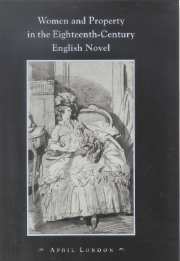Book contents
- Frontmatter
- Contents
- Acknowledgements
- Introduction
- PART I SAMUEL RICHARDSON AND GEORGIC
- PART II PASTORAL
- PART III COMMUNITY AND CONFEDERACY
- PART IV THE POLITICS OF READING
- Introduction
- 9 The discourse of manliness: Samuel Jackson Pratt and Robert Bage
- 10 The gendering of radical representation
- 11 History, romance, and the anti-Jacobins' “common sense”
- 12 Jane West and the politics of reading
- Epilogue
- Notes
- Bibliography
- Index
10 - The gendering of radical representation
Published online by Cambridge University Press: 14 October 2009
- Frontmatter
- Contents
- Acknowledgements
- Introduction
- PART I SAMUEL RICHARDSON AND GEORGIC
- PART II PASTORAL
- PART III COMMUNITY AND CONFEDERACY
- PART IV THE POLITICS OF READING
- Introduction
- 9 The discourse of manliness: Samuel Jackson Pratt and Robert Bage
- 10 The gendering of radical representation
- 11 History, romance, and the anti-Jacobins' “common sense”
- 12 Jane West and the politics of reading
- Epilogue
- Notes
- Bibliography
- Index
Summary
Thomas Holcroft's review of Man As He Is adapts Bage's stigmatizing of the female reader to the language of criticism, dismissing the “tedious and trifling … young ladies” who both write novels and, along with “luckless reviewers”, consume them. But, he continues, while “ the majority of novels merit our contempt”, the extent of their influence and potential efficacy in popularizing Jacobin principles argue for a close and prescriptive attention to the form. Ideally, narrative should bring public and private into concert by “playing on the fancy, interesting the affections, and teaching moral and political truth” (297). Or, as he put it more polemically in a review a year earlier:
The labours of the poet, of the historian, and of the sage, ought to have one common end, that of strengthening and improving man, not of continuing him in error, and, which is always the consequence of error, in vice. The most essential feature of every work is its moral tendency. The good writer teaches the child to become a man; the bad and indifferent best understand the reverse art of making a man a child.
Holcroft's identification of “moral tendency” as the criterion of literary value underlines the importance he assigns to educating his audience. In fostering the reader's capacity to reason and to recognize “truth”, radical writers believed that they were enabling momentous political transformations.
- Type
- Chapter
- Information
- Women and Property in the Eighteenth-Century English Novel , pp. 154 - 168Publisher: Cambridge University PressPrint publication year: 1999



